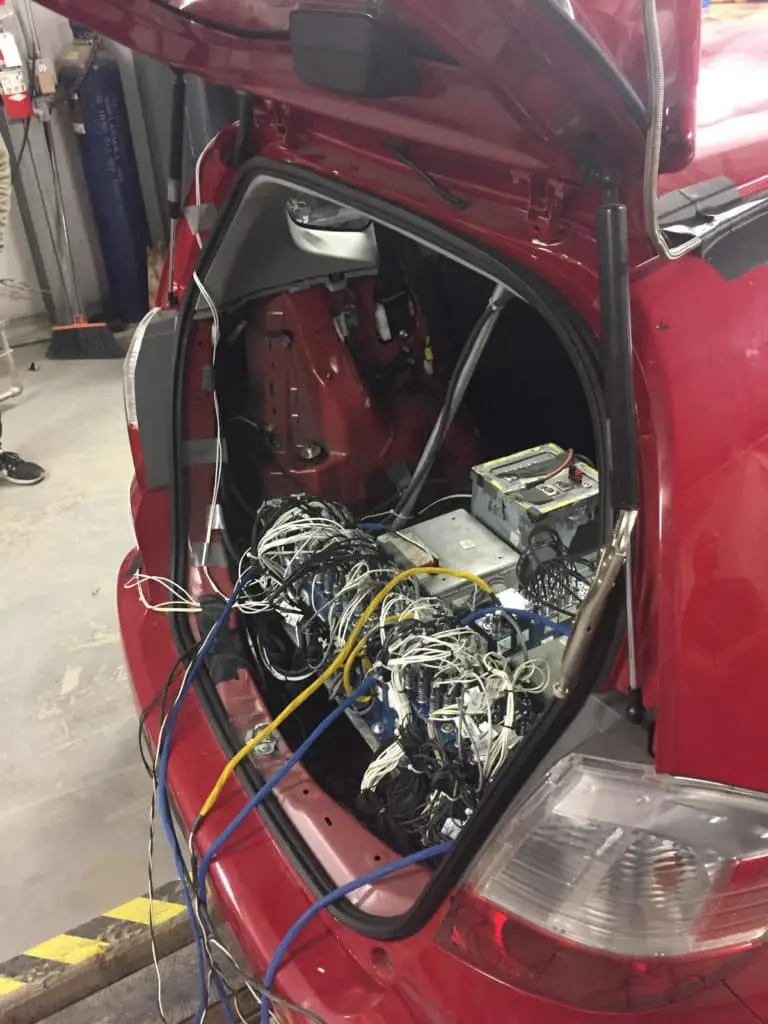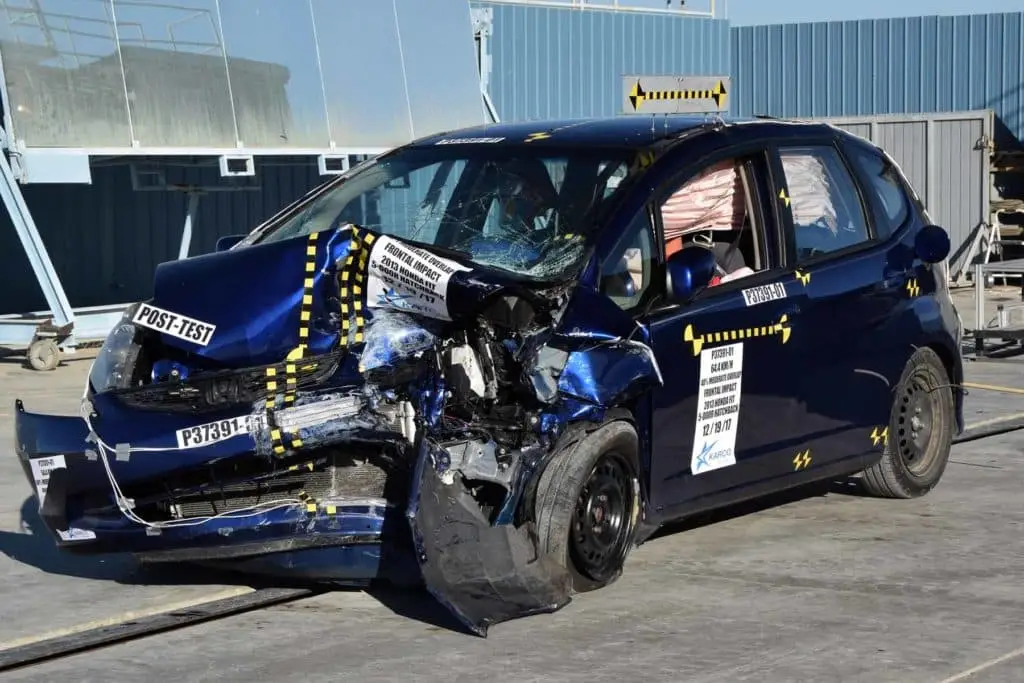
In the wake of the $42 Million Dallas County Jury verdict it became apparent that auto insurance carriers don’t just dictate non-OEM repairs and parts, but try to intimidate the collision industry into using ill-advised repairs and unsafe aftermarket parts that are imitations of Original Equipment Manufacturer (OEM).
Testimony by the manager of the defendant collision repair business in the Seebachan trial alleged that State Farm Insurance dictated non-OEM repairs.
The Tracy Law Firm’s Crash Lab in conjunction with the Auto Body Association of Texas (ABAT) with the support of other collision repair industry groups did what the auto insurance carriers have never dared to do. We scientifically tested the crashworthiness of non-OEM repair procedures which testimony in the Seebachan trial indicated is a widespread practice in the collision industry and we tested the crashworthiness of structural aftermarket parts.
A vehicle with a non-OEM roof repair that duplicated the glued roof in the Seebachan case and a vehicle equipped with aftermarket parts that auto insurance companies pressure the collision repair to use were subjected to a 64.4 km/h 40% Moderate Overlap Frontal Impact crash test. Todd Tracy and a team of automotive engineers who specialize in crashworthiness selected this test scenario because this impact is the most dangerous and frequent accident that occurs on the nation’s highways. The crash test resembled but was not identical to the actual Seebachan accident which sustained an override and would be impossible to accurately replicate.
The crash tests used the following three (3) Honda Fit 5-Door Hatchback vehicles which were all the same type model.

Vehicle TR-P37392 (Black 2010 Honda Fit 5-Door Hatchback). The OEM control vehicle crash test was conducted on December 26, 2017.
- It is the Original Equipment Manufacturer “control” vehicle that was certified never to have been in an accident or altered in any manner.

Vehicle TR-P37351 (Red 2009 Honda Fit Sport 5-Door Hatchback). The Non-OEM glued roof panel repair crash test was conducted on December 18, 2017.
- Burl Richards, the President of ABAT, and other owners of collision repair facilities supervised the process of replacing the existing steel roof panel using adhesive in the identical manner that it was repaired in the Seebachan case. Technicians also installed an aftermarket windshield that was the same grade as the one that was in the Seebachan accident vehicle.

Vehicle TR-P37391 (Dark Blue 2013 Honda Fit Sport 5-Door Hatchback). The Aftermarket Parts crash test was conducted on December 19, 2017.
- Burl Richards, the President of ABAT, and other owners of collision repair facilities supervised the process of key OEM structural members that are critical to crashworthiness with Aftermarket Parts.
- The Aftermarket parts included:
- Hood – CAPA
- Left and Right Fenders – CAPA
- Everything else is NON CAPA due to the fact they were not available
- Radiator Support
- Bumper Reinforcement Bar
- Left and Right Hood Hinges
- Windshield

CRASH TESTING PROTOCOL
-
- KARCO Engineering Conducted the Crash Tests
9270 Adelanto, CA 92301
760-246-1672
The Crash Tests were conducted as follows:- IIHS moderate frontal offset on driver’s side at 40mph (Expert testimony and engineering analysis in the Seebachan case indicated that this was a frontal offset collision with the wheel well of the other vehicle.)
- Each crash test generated a Delta Velocity of 42-44 mph.
- Each vehicle contained two 50th percentile fully instrumented Hybrid III crash test dummies that measure potential injuries to the head, thorax, femurs and tibias/fibulas.
- The vehicles measured the energy wave along the roof rail and the frame using accelerometers on the roof rail between A and C pillar on driver’s side, on the frame underneath the driver, and in the driver’s footwell.
- Cameras recorded video views of the top, sides, underbody.
- Each vehicle was placed on a spit and photographed from the bottom so we could see pre and post crush.
- KARCO Engineering Conducted the Crash Tests
Following the crash tests, the vehicles were returned to the Tracy Law Firm’s Crash Lab in Dallas. Digital 4-D models were created of each vehicle for more detailed analysis.
The vehicles will be released to ABAT so that body shops, adjusters, insurance carriers, and the public can see the scientific evidence of what happens when OEM and ICAR policies are not followed.
If you are a collision repair business interested in talking to your legal rights against the auto insurance company, you may call 214-736-8782 or use our contact form.
For News Media Inquiries Please Contact:
Robert Riggs
214-686-1949
Robert@AudienceSpeak.com
Related Articles:
Aftermarket Parts Crash Test Puts Auto Insurance Company CEO’s On Edge
The Crash Test Car Insurance Carriers Don’t Want You To Know About

